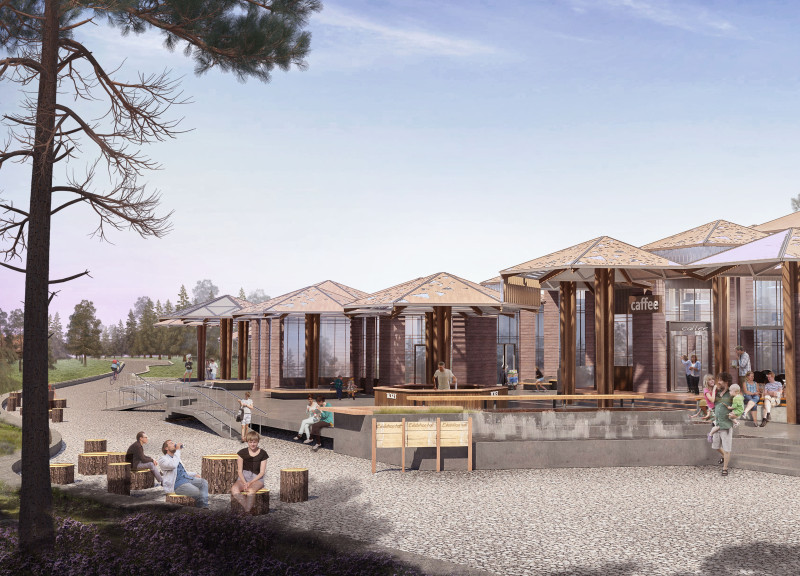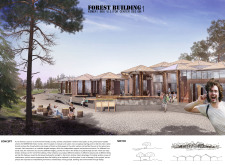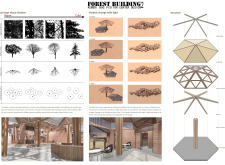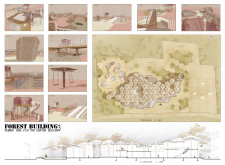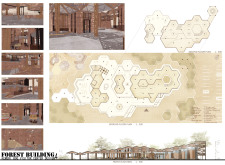5 key facts about this project
The KEMERI BOG Visitor Center is situated in Latvia's rich natural landscape, surrounded by dense forests and unique ecosystems. It serves as a center for visitors, offering information and facilities to deepen their connection with the bog environment. The design concept is based on a modular unit system consisting of umbrella-shaped hexagon forms, reflecting the natural shapes found in the forest and establishing a close link between the structure and its setting.
Design Concept
The building employs a modular design that features independent support and enclosure structures. Each hexagonal unit varies in height, echoing the diversity of tree heights in the surrounding area. This variation creates interesting visual dynamics and adds depth to the visitor experience. The design focuses on creating a space that resonates with both the landscape and the people using it.
Light and Shadow Dynamics
A prominent aspect of the roof design includes broken windows that allow light to filter in, creating shifting patterns of shadow inside. This effect resembles sunlight passing through tree leaves, influencing the mood and atmosphere of the interior. By simulating the natural light qualities of the forest, this feature enhances visitors' connection to the outside world.
Functional Arrangement
Inside the center, the layout includes crucial functional spaces such as a ticket office, souvenir shop, outdoor kitchen, café, lounge, and exhibition hall. This organization meets visitor needs while encouraging social interaction. External areas such as a sand play zone and playground further encourage guests to immerse themselves in the natural surroundings and enjoy outdoor activities.
Sustainability and Maintenance
The modular nature of the design also brings practical benefits. Individual components can be easily replaced, which helps maintain the building's condition over time. This focus on longevity aligns with the wider goal of sustainability, ensuring that the structure remains functional and relevant for years to come.
The visitor center’s roof profile draws inspiration from the natural environment, reinforcing the feeling of being surrounded by the forest while providing a comfortable space for people to gather and explore the unique landscape.


